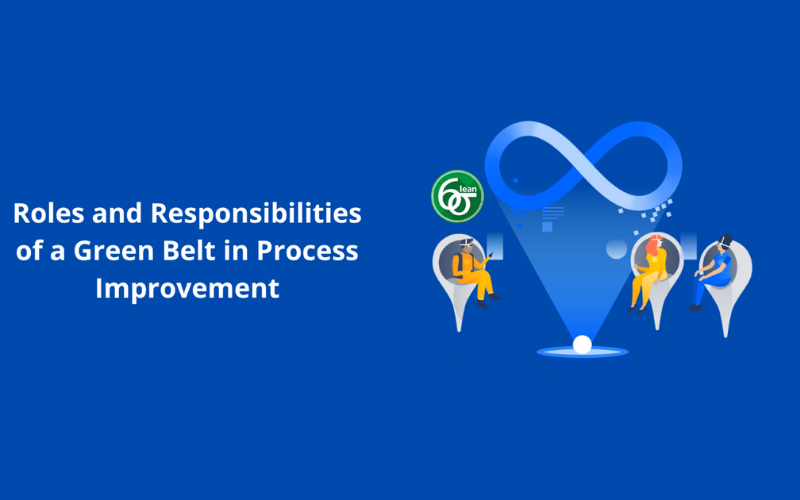Lean Six Sigma is a shining example of efficacy and efficiency. The job of a Green Belt, a trained practitioner entrusted with leading process improvement projects, is essential to the Lean Six Sigma framework. This blog will explore the tasks and responsibilities of a Green Belt in process improvement, whether you’re starting a Lean Six Sigma Course or want to comprehend the relevance of a Lean Six Sigma Green Belt.
Table of contents
- Defining the Lean Six Sigma Green Belt
- Roles of a Lean Six Sigma Green Belt
- Responsibilities of a Lean Six Sigma Green Belt
- Conclusion
Defining the Lean Six Sigma Green Belt
Using Lean Six Sigma A professional with a green belt has a thorough knowledge of the Lean Six Sigma methodology, tools, and concepts. This position is crucial for advancing organisational processes, streamlining workflows, and producing quantifiable results.
Roles of a Lean Six Sigma Green Belt
We examine the functions of a Lean Six Sigma Green Belt here:
- A Green Belt oversees projects involving process improvement. They pinpoint areas for development, specify the project’s objectives, aims, and scope, and create a project plan. Green Belts make sure that projects align with the company’s strategic goals and prioritise those that provide a lot of value.
- Data drive Lean Six Sigma. Green Belts are in charge of gathering pertinent information to assess the processes’ present status. They employ statistical techniques to find trends, patterns, and the reasons behind inefficiency. This data-driven methodology aids in decision-making and the creation of focused improvement plans.
- For improvement, it is crucial to comprehend the complexities of processes. Green Belts create maps of current processes to pinpoint wasteful regions, redundant steps, and bottlenecks. To identify potential areas for optimisation, they examine process flow, cycle durations, and resource utilisation.
- Green Belts are excellent at finding the underlying causes of process problems. They employ methods like the 5 Whys and Fishbone diagrams to pinpoint the underlying causes of issues. Green Belts guarantee that gains are long-lasting and sustainable by addressing the underlying issues.
- Green Belts concentrate on creating and executing solutions after determining the underlying issues. They work with teams to test new ideas, implement process improvements, and assess the effects of these changes. Before full-scale adoption, Green Belts employ pilot projects to validate changes.
- Green Belts oversee the entirety of a project. They create project schedules, distribute resources, monitor development, and notify stakeholders. The timely and cost-effective delivery of improvements is ensured by good project management.
Responsibilities of a Lean Six Sigma Green Belt
The following are some of the duties of a Lean Six Sigma Green Belt:
- Using Lean Six Sigma To promote a constant development culture, green belts are essential. They set an example for their teams, motivating them to accept change, try out novel concepts, and strive for process perfection.
- Team members frequently get training from Green Belts on the methodology and principles of Lean Six Sigma. Teams are coached on effectively using tools for improvement, and improvements are implemented under their direction.
- Process improvement is a dynamic field. Therefore Green Belts must keep up with the most recent Lean Six Sigma methods and trends. They may keep on top of new difficulties and maintain their effectiveness as problem solvers by engaging in ongoing learning.
- Green Belts work with cross-functional teams, including stakeholders, to gain understanding and promote agreement. Explaining improvement methods, getting buy-in, and reporting success to top management depends on effective communication.
Conclusion
A Lean Six Sigma Green Belt has a variety of tasks and responsibilities that call for leadership, analytical, and communication abilities. The effectiveness and efficiency of an organisation may be greatly improved by a Green Belt’s capacity to manage process improvement initiatives, analyse data, pinpoint fundamental causes, put recommendations into practice and promote cultural change. Understanding these roles and duties is crucial for utilising the potential of Lean Six Sigma to accomplish continuous improvement and promote success inside your organisation, whether you’re thinking about becoming a Lean Six Sigma Green Belt or working with one.
Also Read: Things you should know before getting your car key duplicated




